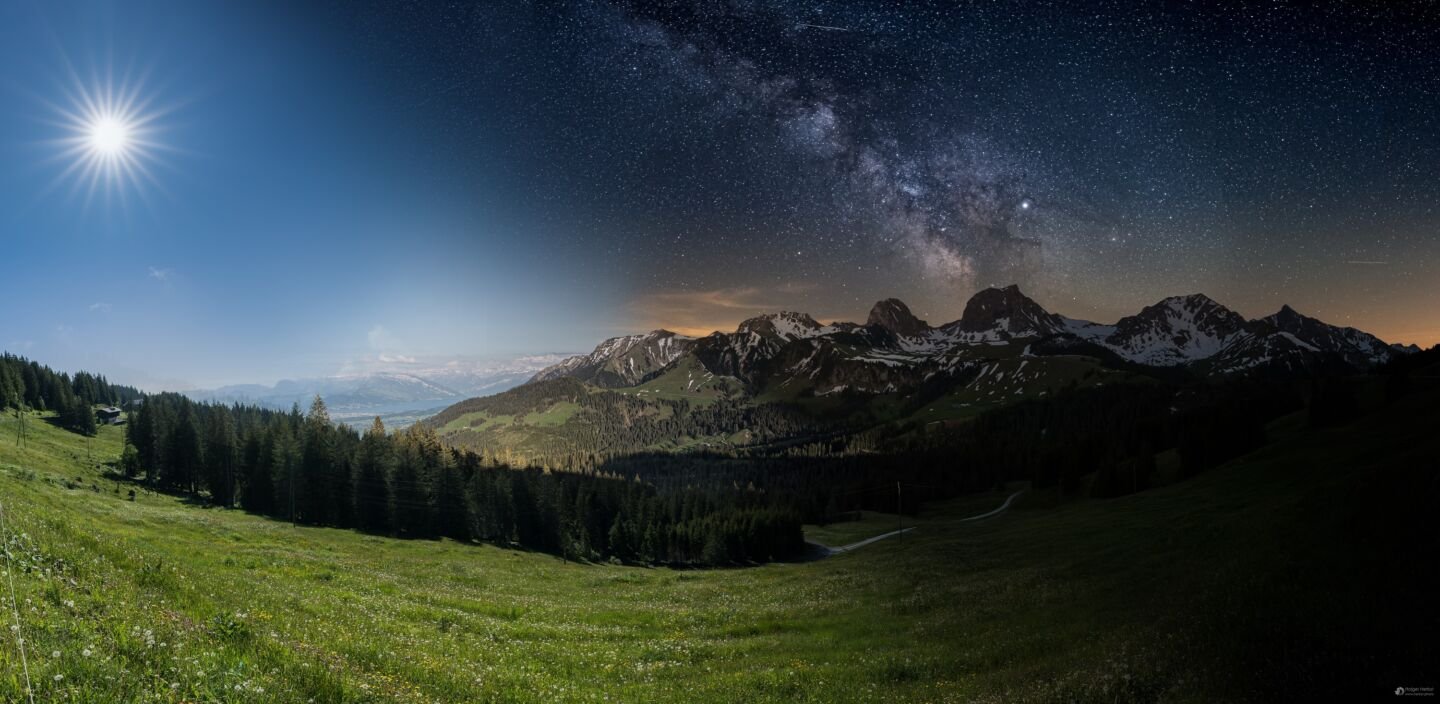
Light is Energy: Estimating the Impact of Light Pollution on Climate Change
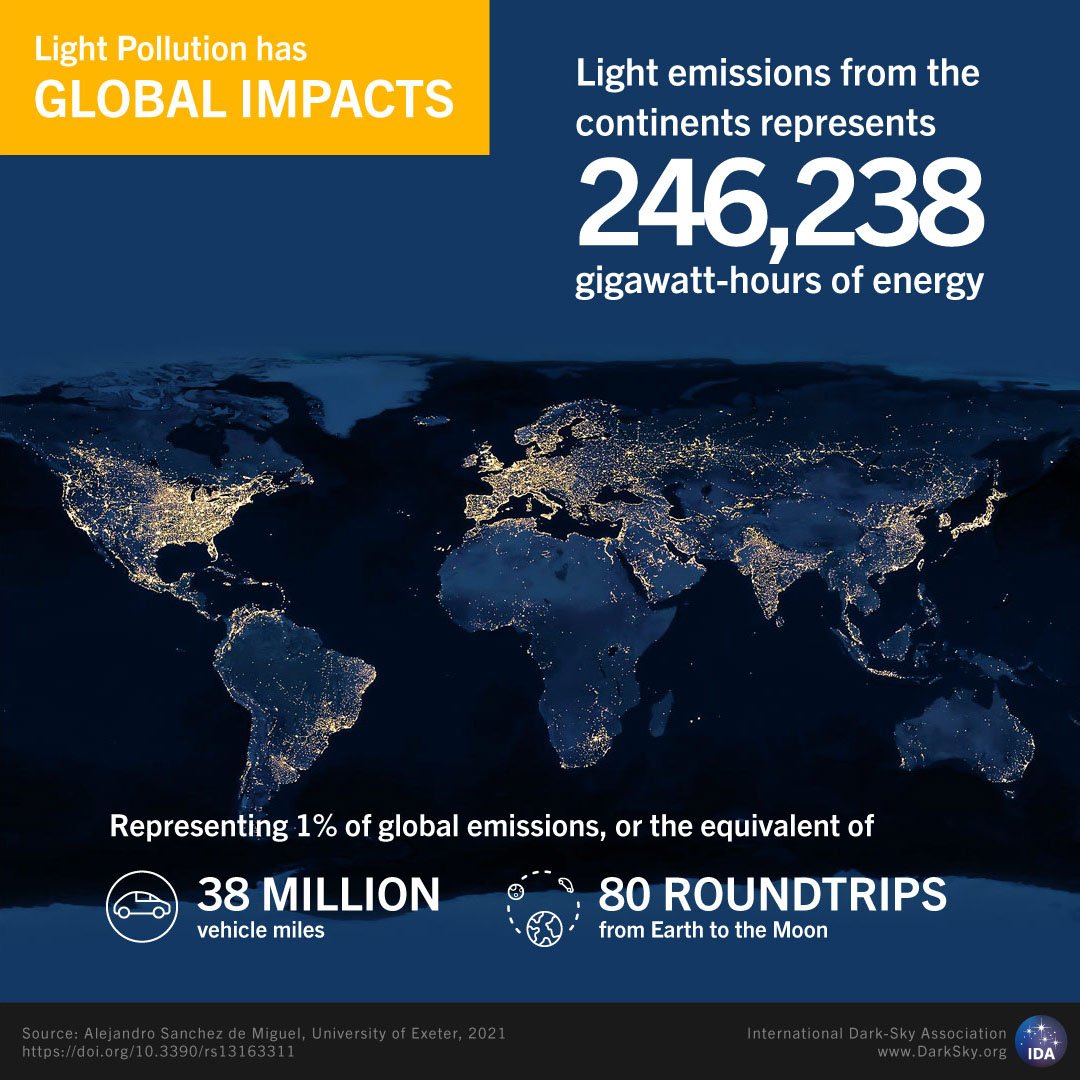
The classic image of the world at night shows the light from countless bulbs pouring into space. By definition, the light reaching a VIIRS night band sensor, flown on satellites orbiting at 824 kilometers elevation, is wasted. But that is not the only light wasted. The light from a parking lot lit up at 3 am when no one is around is waste. The porchlight that shines in a neighbor’s bedroom is waste. The street illuminated to ten times the recommended level is waste.
All of this wasted light adds up. Globally we spend at least $50 billion in energy costs each year to produce light that escapes into space. In the United States, a conservative estimate of savings by completing the transition to LED lights and using lighting control systems is at least $15.4 billion annually by 2035.
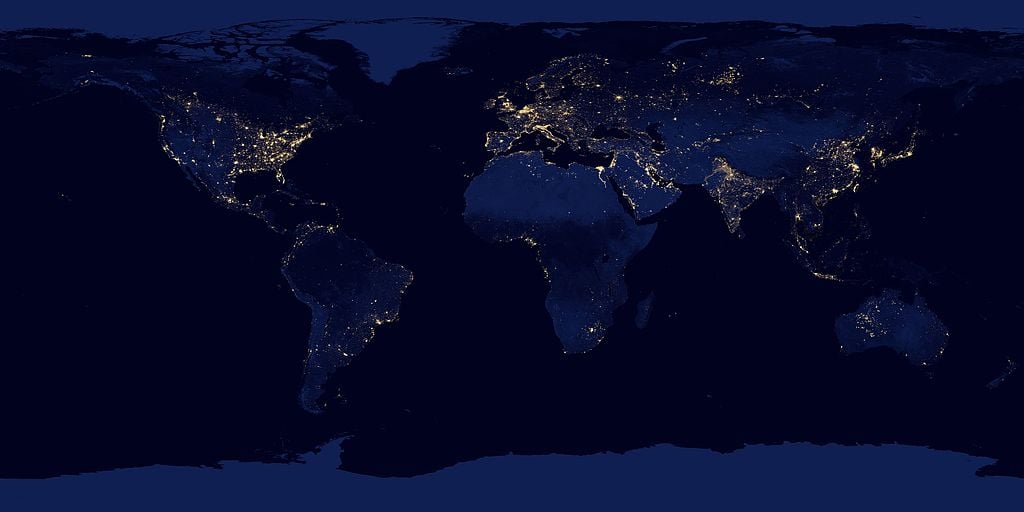
In the United States, outdoor lighting consumes approximately 380 tWh per year —enough energy to power 35 million homes for one year. That is the equivalent of driving 49 million passenger vehicles for one year. Globally, we estimate that the energy used to generate light that escapes to space is at least 1% of global greenhouse gas emissions.
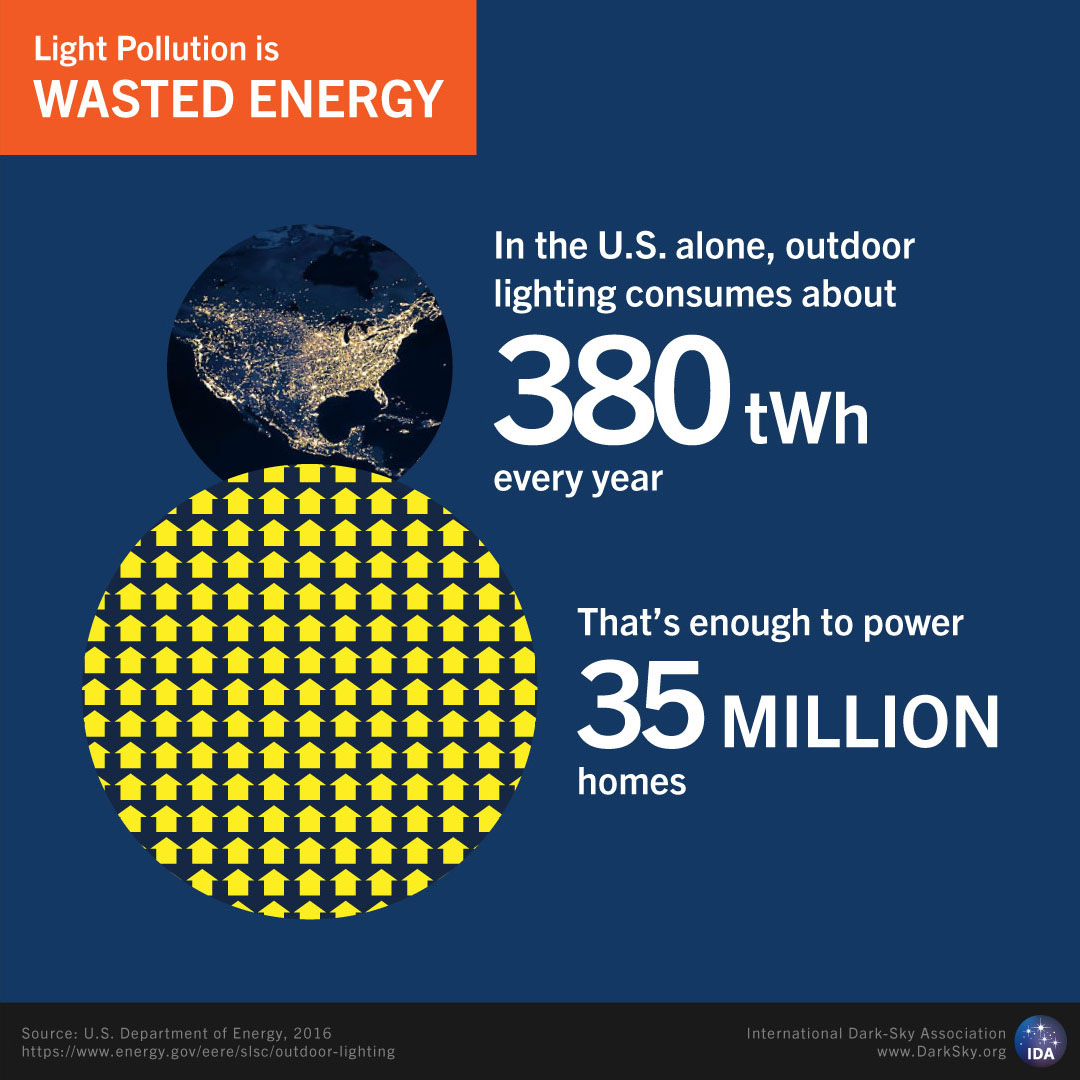
The US Department of Energy reports that “well under 1% of light generated by luminaires reaches an occupant’s eye.” This means that at any given moment, at least 99% of artificial light we produce is not used by the human eye to interpret its surroundings. The potential for future energy savings through quality outdoor lighting applications is tremendous. It is past time to move beyond a narrow focus on fixture efficiency to application efficiency. By carefully applying the Five Principles for Responsible Outdoor Lighting, additional savings are within reach.
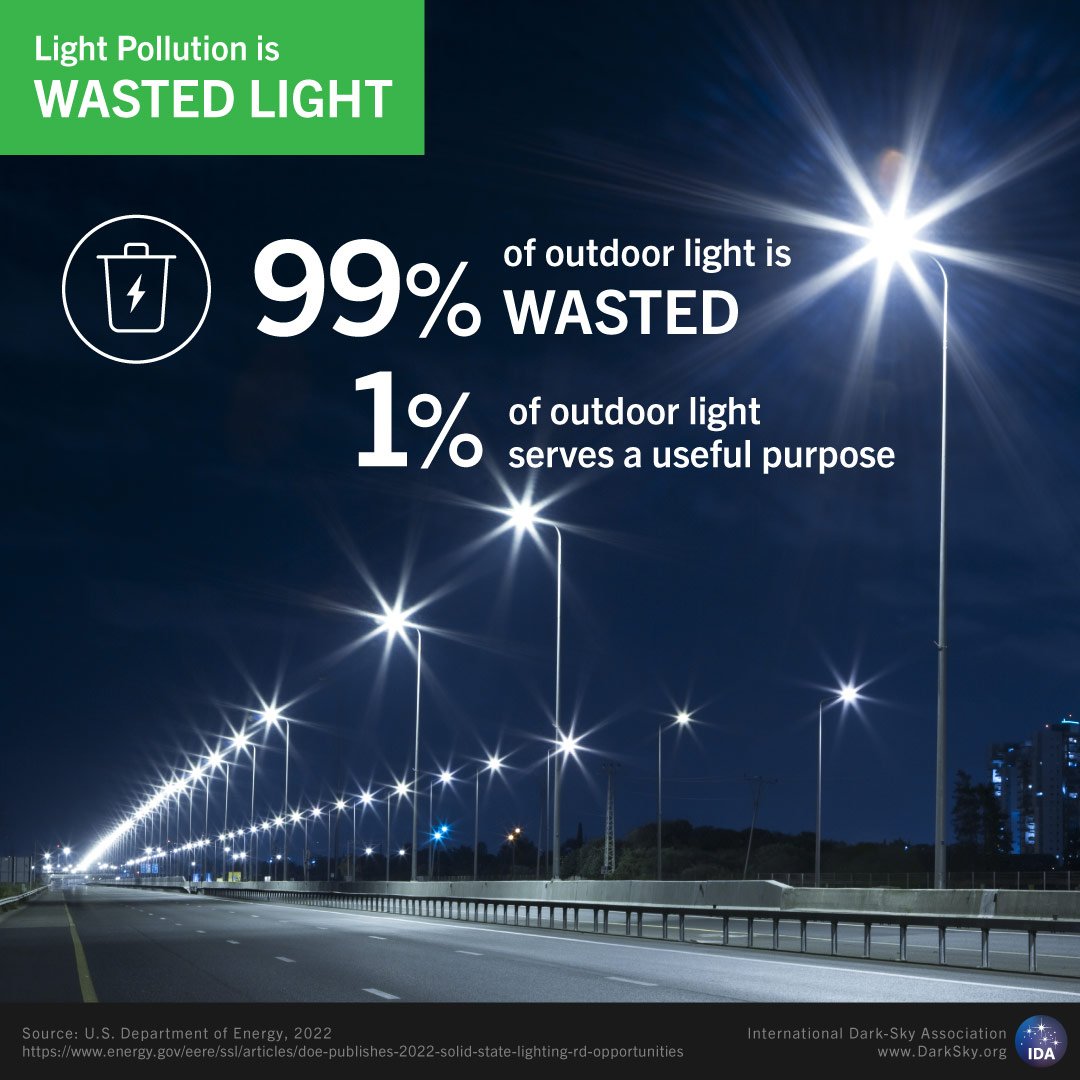
Reducing light pollution is a readily available win-win solution. It directly protects biodiversity by lessening the impact of excessive light on plants and animals immediately. And by reducing energy demand at night, it reduces greenhouse gas emissions and aids in long-term protection strategies.
Light pollution reduction should be an essential component of every city, country, and business’s Greenhouse Gas Reduction Strategy.
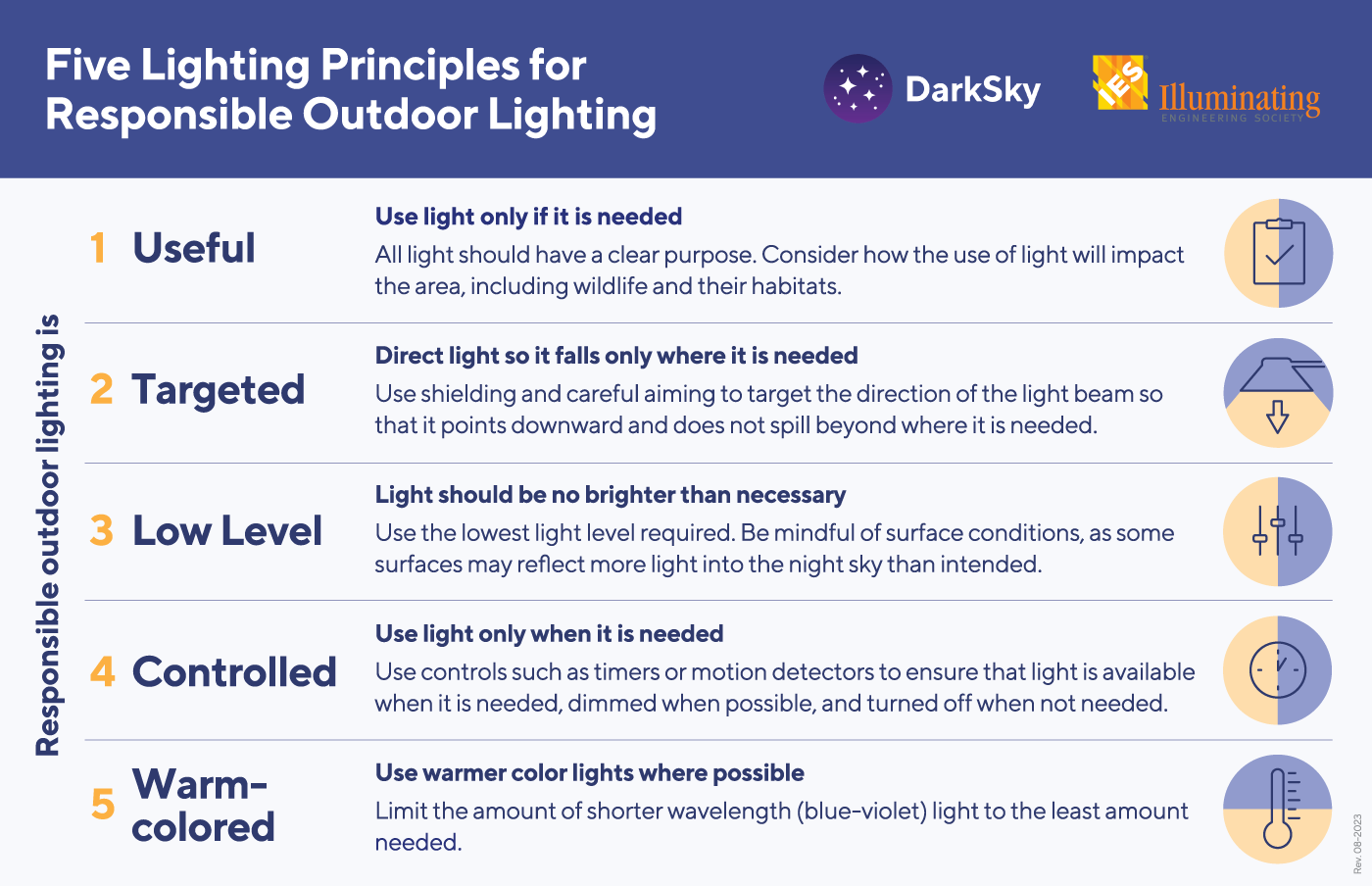
Background
In the past, IDA estimated that at least 35% of outdoor light is wasted. In the United States, this was estimated to cost at least three billion US dollars annually. But this estimate predates the transition to energy-efficient LED lighting fixtures, so what is the current estimate? Has the use of more efficient lighting fixtures led to lasting energy savings? There is growing evidence of a classic “rebound effect” whereby as light becomes cheaper, we use more of it.1
We have updated and confirmed our earlier findings using recent research and publicly available datasets. Our overall approach and sources are described below.
Globally, scientists estimated that light emissions from the continents represents 250,00 gigawatt-hours of energy. This adds up to at least $50 billion in energy costs. It is equivalent to at least 1% of world emissions of greenhouse gasses.
Using the same methodology, the losses from the United States alone are estimated at $4.5 billion.
Source: A 2021 study by Alejandro Sánchez de Miguel’s 2021 estimated global trends in midnight power emissions of the world’s continents and nation-states.2 Assuming an average price of 0.29298 €/kWh (akin to Europe-wide prices in 2021), the energy cost could be as much as $81.46 billion. i.e [amount of energy] x [cost/unit amount of energy] = total cost.
Because energy is generally more costly in Europe, we used $50 billion US dollars as a conservative estimate. With the surge in the cost of energy dating to the later half of 20213 and further exacerbated by the Russian invasion of Ukraine in March 2021, this estimate is already out of date, and an underestimate.
Limitations: This estimate is based on the light that reaches the VIIRS satellite. Because the VIIRS satellite only sees a portion of the spectrum of light, it is an underestimate of the total losses due to light pollution. It also does not account for the other aspects of light pollution, such as unnecessary lighting.
In the United States, the Department of Energy regularly reviews the status of the conversion to solid-state lighting technology, like LEDs. In 2015, the US Department of Energy4 estimated that indoor and outdoor lighting accounted for 15 percent of global electricity consumption and 5 percent of worldwide greenhouse gas emissions. Since then, there has been a significant investment in LED lighting to reduce energy savings.
In the 2022 Solid State Lighting Report, the Department of Energy estimates that total energy savings of $15.4 billion annually in 2035 can be achieved by transitioning outdoor lights to energy efficient LEDs and using control systems that dim lights or turn them off when not needed. They estimate that savings of up to 40% are possible by using smart controls5. The DOE estimates savings due to controls—which tend to reduce light pollution through dimming and turning fixtures off when not in use— of $3.4 bn per year by 2035, assuming 75% market penetration. We were unable to assess the modeled dimming schedule and overall light levels. Anecdotally, many cities are lighting at many times the recommended levels, and hence these estimates are likely conservative.
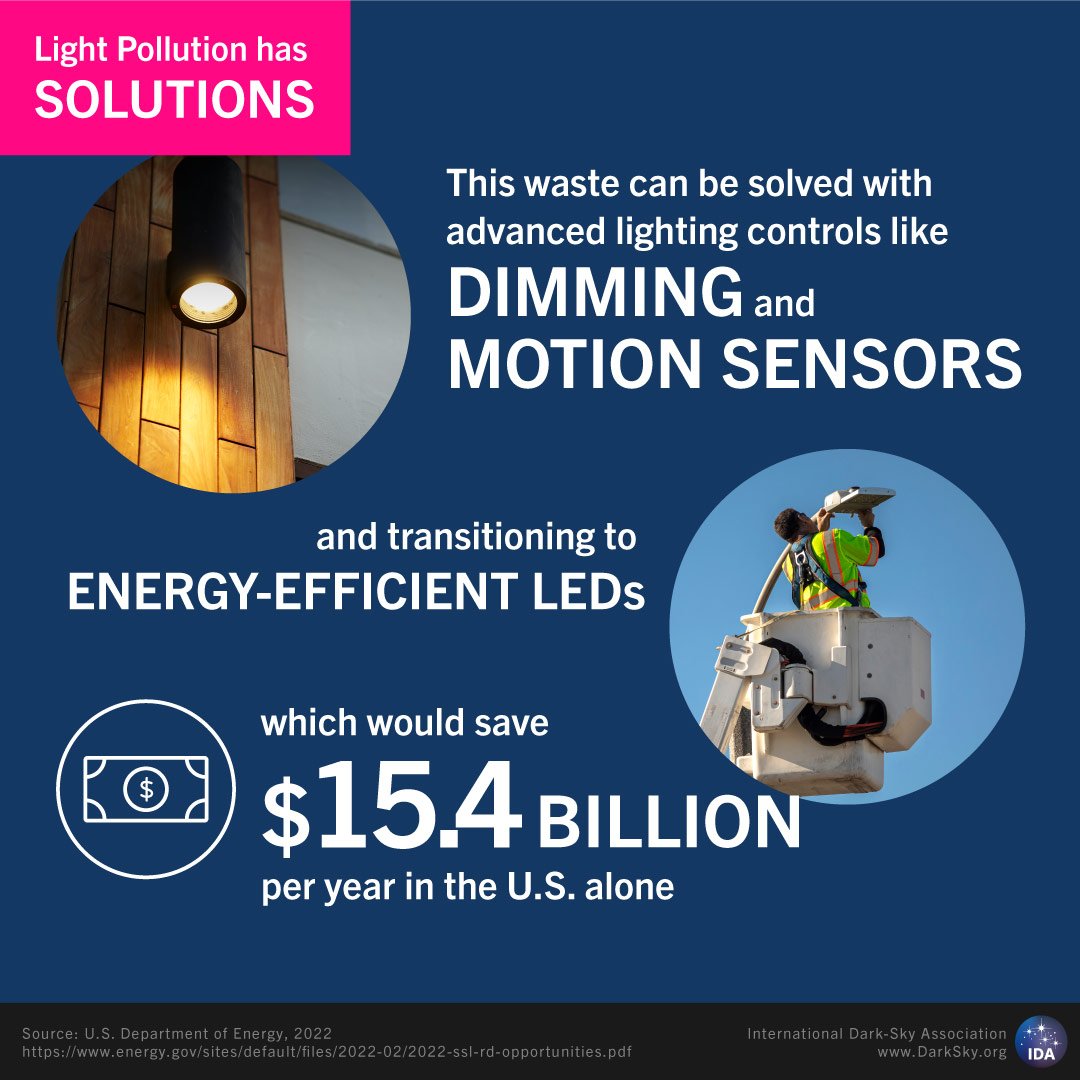
Source: Department of Energy, 2015 blog [link]; Department of Energy, Energy Savings Forecast of SSL in General Illumination Activities, December 2019 [link]; Department of Energy, 2022 SSL Lighting R&D Opportunities, February 2022 [link].
Limitations: The total savings of $15.4 billion assume all outdoor fixtures transition towards energy-efficient LED fixtures and that 75% of them are on controls. We have successful LED streetlight conversions, such as Tucson, Arizona. Through careful planning, the City reduced light emissions by 7% and realized annual savings of $2.16 m
The Department of Energy 2022 SSL Lighting R&D Opportunities report goes on to state that,
“Analyses have shown that only a small fraction of light—well under 1%—generated by luminaires reaches an occupant’s eye.”
While this is a theoretical approach, it does illustrate the potential for future savings through the efficient application of outdoor light at night.
1 https://doi.org/10.1582/LEUKOS.2010.06.04001
2 https://doi.org/10.3390/rs13163311
3 https://www.weforum.org/agenda/2021/10/surging-energy-prices-may-not-ease-next-year-2022/
4 https://www.energy.gov/articles/rise-and-shine-lighting-world-10-billion-led-bulbs
5 https://www.energy.gov/eere/slsc/outdoor-lighting



















